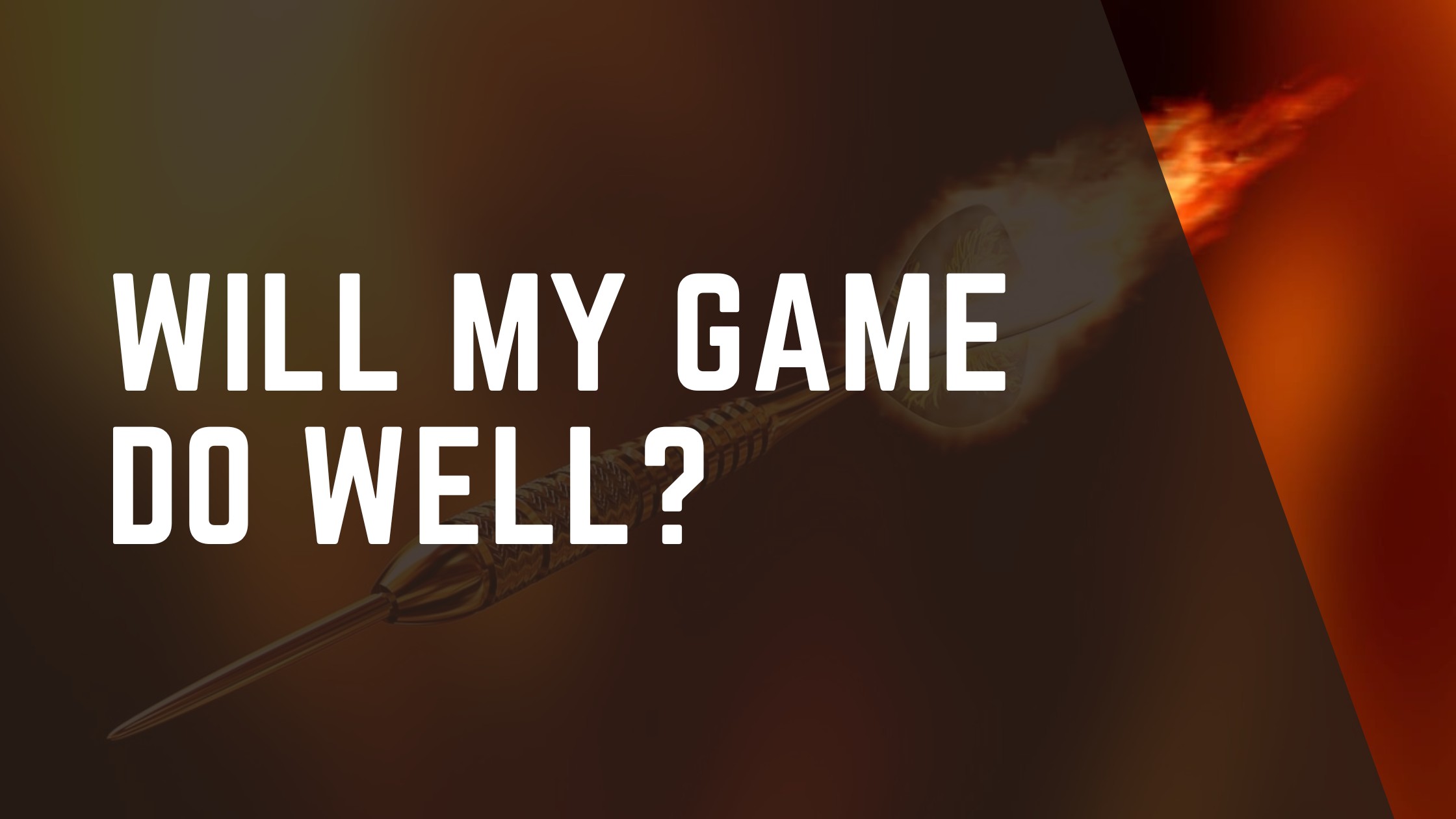Every indie dev has asked it. The question of success is constantly in the back of every indie dev’s mind. You pour months – maybe years – into a project, and the last thing you want is for it to fall into the void of obscurity. But here’s the hard truth: success in game development isn’t just about making something good. It’s about making something people want.
This article is about bridging that gap. I’ll break down how to evaluate whether your idea has a real audience, how to design around what players are looking for, and how to think about marketing long before launch day. Because if you want your game to sell – or even to be played – you can’t afford to leave that question unanswered until it’s too late.
What Makes a Game “Marketable”
Marketability is the sweet spot where what you want to make lines up with what players want to play. This doesn’t mean you have to chase the latest craze, but it’s important to consider the overlap where your creative vision and audience demand meet.
At the heart of that is the hook. A strong hook communicates what’s cool about your game in ten seconds or less – whether that’s a striking visual style or a core mechanic that’s obvious just by watching it once. If players need a lot of help to “get it,” you’ve already lost a large amount of your audience.
But remember, marketable doesn’t mean generic. It means understandable. You can make something weird, experimental, and deeply personal – as long as players can grasp the appeal quickly. If you can’t describe your game in one simple sentence that a total stranger understands, it’s probably not ready to sell.
If you want to look into the importance of elevator pitches and defining what you’re making before you make anything, I’ve got you covered.
Research Before You Build
Before you write a single line of code or block out your first level, you need to do your homework. Most indie games don’t fail because they’re bad: they fail because the developers built something nobody was really looking for. And the only way to avoid that trap is to ground your decisions in data, rather than just gut instinct.
Start by looking where the players already are. Steam tags, wishlist numbers, and top charts are goldmines of information about what genres, aesthetics and mechanics are catching people’s attention. Pay attention to patterns – what’s rising, what’s fading, and which niches are oversaturated. Then dig deeper: study the games sitting next to where you want to be. Look at how they present themselves, how they’re priced and how they talk to their audience.
Ask yourself early: is this niche growing or shrinking? Can I compete visually or conceptually? If the honest answer is “no,” that doesn’t mean give up – it means rethink your angle before you sink two years into something no one’s waiting for.
Treat this research as part of pre-production, not a side quest. It’s what defines the creative boundaries you’ll work within and clarifies exactly who you’re building for. The more you know now, the fewer expensive surprises you’ll face later.
Designing With the Market in Mind
Creativity alone doesn’t make a game successful. You can build the most innovative system in the world, but if players don’t immediately understand why it’s interesting, they’ll scroll right past it. Designing with the market in mind helps to shape your ideas so they’re appealing and easy to grasp from the very first glance.
Start by anchoring your design around a strong, understandable hook. Players should “get it” in under ten seconds. If you can sum your concept up as “it’s X meets Y” and people immediately know what you mean, you’re on the right track. Clarity almost always beats raw originality when you’re fighting for attention in crowded storefronts and social feeds.
The next step is testing – and doing it early! Don’t wait until your game is half-built to find out if anyone cares. Share prototypes, GIFs, or short clips with fresh eyes and see what resonates. If players latch onto a mechanic or idea right away, double down on it. If they don’t, adjust before it becomes too expensive to change and full production begins. I’ve talked about the impact audience feedback can have ad-nauseam before.
The games that break through aren’t always the boldest or weirdest: they’re the ones that are easiest to understand, talk about and share. When you design with that in mind you can make sure that your creativity actually reaches people, rather than designing something that won’t be seen.
Marketing as Part of the Game Design Process
One of the biggest mistakes indie devs make is treating marketing like a final step: something you worry about once the game is nearly done. In reality, good indie game marketing starts the moment development does. Every design choice you make, from art style to mechanics to tone, is also a marketing decision, because it shapes how players will discover, understand, and talk about your game.
Think of marketing as an extension of your design process. Start sharing progress early; even rough prototypes, sketches, or behind-the-scenes clips. A short GIF of a cool mechanic or a devlog explaining a design challenge can start building an audience months (or even years) before launch. These early glimpses give you valuable feedback on what’s resonating with your potential fanbase.
Consistency is king here. The way you present your game on social media, in your Steam page description, and in your trailer should all feel like they belong to the same world. The clearer and more cohesive that identity is, the easier it is for players to remember and share.
Most importantly, remember that indie game marketing isn’t about shouting louder; it’s about teaching people why your game matters. The more naturally your messaging grows out of the design itself, the easier it is to communicate that value. Treat it like part of the creative process and you should have an emotionally connected audience waiting long before release day.
Conclusion
Asking “will my game do well?” isn’t a sign of doubt – it’s a sign you’re thinking like a professional. Success in game design isn’t just about having a great idea; it’s about shaping that idea so it connects with real players. That means defining who your audience is, designing with their expectations in mind and making sure your core hook is clear from the start.
When you build research into pre-production, your creative decisions become intentional moves toward a specific goal, rather than just shots in the dark. When you treat marketing as part of the design process, you’re not scrambling to get attention after the fact: you’re building a community while you build the game.
At its heart, marketability is where your passion and your players’ curiosity meet. And if you can find that intersection early by designing with clarity, communicating with purpose and building around what excites people, then you’re not just hoping your game will do well: you’ve got the odds on your side.


Leave a Reply